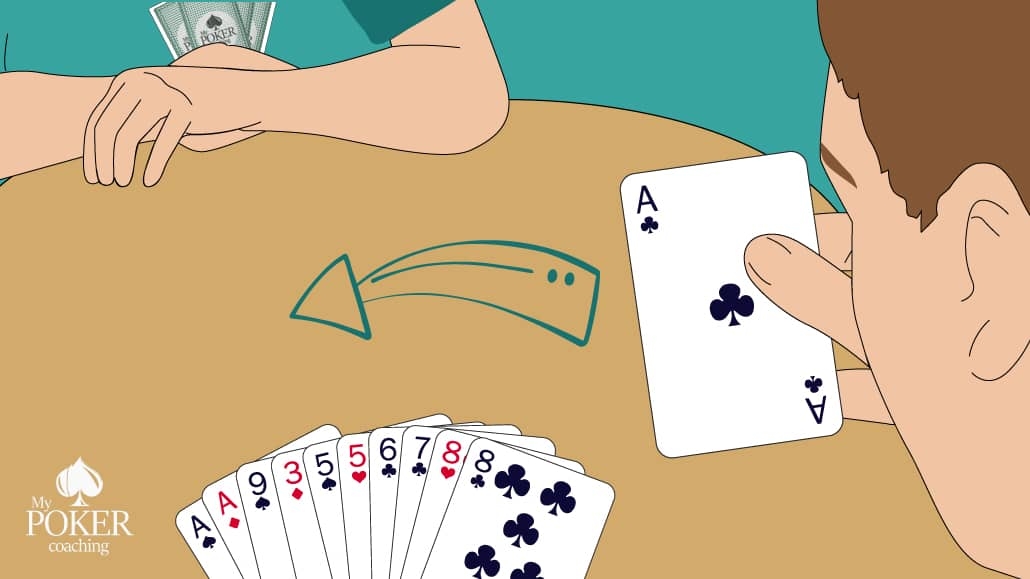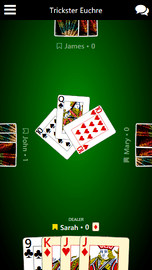Spades Rules
Spades Rules

Card Game Rules Spades, or Call Bridge, is a traditionally 4 player card game of strategy and luck. Spades uses a standard 52 card deck with Aces high, 2s low, and Spades trumping all. The objective is to win at least as many “tricks” bid.
The game has four players, divided in two teams, sitting on alternate positions
Players - 4.
52 Cards.
Distribuition - 13 cards for each of the 4 players.
Object - The team that scores 100 points first is the winner.
Definitions
Trick – a hand won
Hand - a sequence of 4 rounds, in which each player plays a card, and the winner (who discard the highest card) wins a trick.
The highest card - the highest card of the suit. The order of the cards is as follows, from the lowest to the highest: 2, 3, 4, 5, 6, 7, 8, 9, 10, J, Q, K,A. The spade suit is always trump.
Follow the suit - play a card of the same suit from the first card of the hand..
Bid - the number of tricks a player intends to get
Contract - the bid agreed by the team.
Bags - any hand won by a team that wasn't in the contract.
Nil - A Bid to win no tricks at all in any hand. This bid is worth 100 points
Double Nil – It's the same than nil, it is worth 200 points. One player, having not yet looked at his cards, may choose to bid . These cards will be revealed once the bid is made.
The name of the game is Spades, where Spades is the trump suit. Your goal is to win your contract bid by working with your partner. Remember to play your cards carefully and watch out for your. Every player must make a bid; no player may pass. No suit is named in the bid, for as the name of the game implies, spades are always trump.
The Game
13 cards are dealt to each player one by one, clockwise. After the distribution of cards, 13 hands are held. The player on the dealer's left makes the opening lead by playing a single card of any suit, except Spades. Players in clockwise fashion then play a card of their choice; they must follow the suit led by the first player. If any player doesn't have a card of this suit, they may play any card. Cards of spades can only be led after the first hand and after a player who is not able to follow the suit lays one card of spades. In the final hand, the winner is the one who have played one or more cards of spades, the highest card of spades is the winner. If the suit of spades has not been led, the highest card of the first suit that has been led is the winner card. The winning player of the hand wins a trick. This player starts the next hand. After 13 hands, players have no cards remaining on their hands, then the points are counted. If no team has reached 100 points, 13 cards are dealt to each player again and each player from every team must make new bids in order to start a new game. The game proceeds normally up to a team reaches 100 points. So, this team will be the winning team.
Scoring and Penalties
If the contract is fulfilled by the team, this team receives 10 points for each trick won and 1 point for each bag. If the team can't get the the amount of tricks they've bet (contract), they receives the amount of tricks of the contract multiplied by -10 (minus ten), adding so a negative score. When a team reaches 10 points of bags, they receives a penalty of one hundred points and the points of bags are reset.
OBJECTIVE OFSPADES FOR 2 PLAYERS: Be the first player to score 500 points
NUMBER OF PLAYERS: 2 players
NUMBER OF CARDS: Standard 52 card deck, no jokers
RANK OF CARDS: 2 (low) – Ace (high), Spades always trump
TYPE OF GAME: Trick taking
Spades Rules Card Game
AUDIENCE: Adults
INTRODUCTION OF SPADES FOR 2 PLAYERS
Spades is a wonderful trick taking game that challenges players to determine precisely how many tricks they believe they can take. Players are penalized for taking too few as well as too many. While Spades is traditionally a team based game for four players, this two player version is also quite enjoyable.
THE CARDS & THE DEAL
What separates two player spades from the classic version is how the hands are created. There is no deal in this game. Each player will take turns building their hand of thirteen cards – one card at a time.
Shuffle the deck and place it in the center of the playing space.
The nondealer draws a card from the top of the pile. They may choose to keep that card or place it face up in the discard pile.
If the player keeps it, the next card is immediately placed face up on the discard pile. If the player does not want the card they drew, they discard it and must keep the second card. Cards may not be drawn from the discard pile
The second player does the same. They draw a card and choose to keep it or discard it. If they keep it, the next card immediately goes to the discard pile. If they don’t want it, they discard it and immediately take the next card. This process is repeated until each player has a hand of thirteen cards.
The discard pile is placed to the side and ignored until the next hand.

THE BID
Each player looks at their hand and determines how many tricks they believe they can take. Spades are always trump in this game. The nondealer bids first. They may bid from zero to thirteen tricks.
Bidding zero is called going nil. This means that the player thinks they will not take any tricks. Special points are awarded for going nil successfully.

If a player thinks they can take all thirteen tricks, that’s called shooting the moon. Special points are awarded for shooting the moon successfully.
Players do not have to over bid each other. Each player simply states how many tricks they think they can take. The scorekeeper must write the bids down.
THE PLAY
The nondealer leads first. They choose a card and play it to the center. To begin with, spades cannot be played until that suit is broken. Spades are broken when a player is unable to follow suit or only has spades left in their hand.
The opposite player must follow suit if they can. If they cannot follow suit, they may play any card that they wish (including a spade). For example, if a king of hearts is led, the following player must lay a heart. If they are unable to lay a heart, they may play any card from their hand – including a spade.
The player who played the highest card in the suit that was led or the highest spade takes the trick.

Whoever takes the trick leads next.
Play like this continues until all thirteen cards have been played.
Deal alternates between players. The non dealer will always draw and lead first.
Spades Rules
SCORING
A player earns ten points for each trick that helps them meet their bid. For example, if a player bids six and takes six tricks they earn 60 points for doing so.
Tricks taken beyond the player’s bid are called bags. Bags are worth 1 additional point. For example, if a player bids six and takes seven, they earn 61 points. Be careful! A player loses 100 points for every ten bags they take.
If a player does not meet their bid, they lose 10 points for each trick they bid on. For example, if a player made a bid of six tricks, and only took five, they would lose 60 points from their score.
If a player bids nil (meaning they think they will take zero tricks) and is successful, they earn 100 points. If they fail to take zero tricks, the captured tricks count as bags. For example, if a player bids nil and takes five tricks, they would earn 5 points for the hand.
If a player shoots the moon and is successful, they earn 250 points. If the player fails to take all of the tricks, the tricks they do take count as bags. For example, if a player shoots the moon and only takes nine tricks, they would earn 9 points. Remember, every ten bags costs the player 100 points from their score.
How To Play Spades Pdf
The first player to reach 500 points wins the game.
Spades Rules Hoyle
- TRIPLE SNAKES - February 15, 2021